This Eggplant, Potato and Tomato Casserole is a classic example of ‘lathera’ cuisine, a Greek tradition known for dishes cooked with plenty of olive oil. Here, eggplant and potatoes are first pan-fried in olive oil. Then, they’re topped with caramelised onions and baked in a tomato sauce until tender. This is the perfect dish to enjoy with a side of crusty bread, feta cheese and olives.
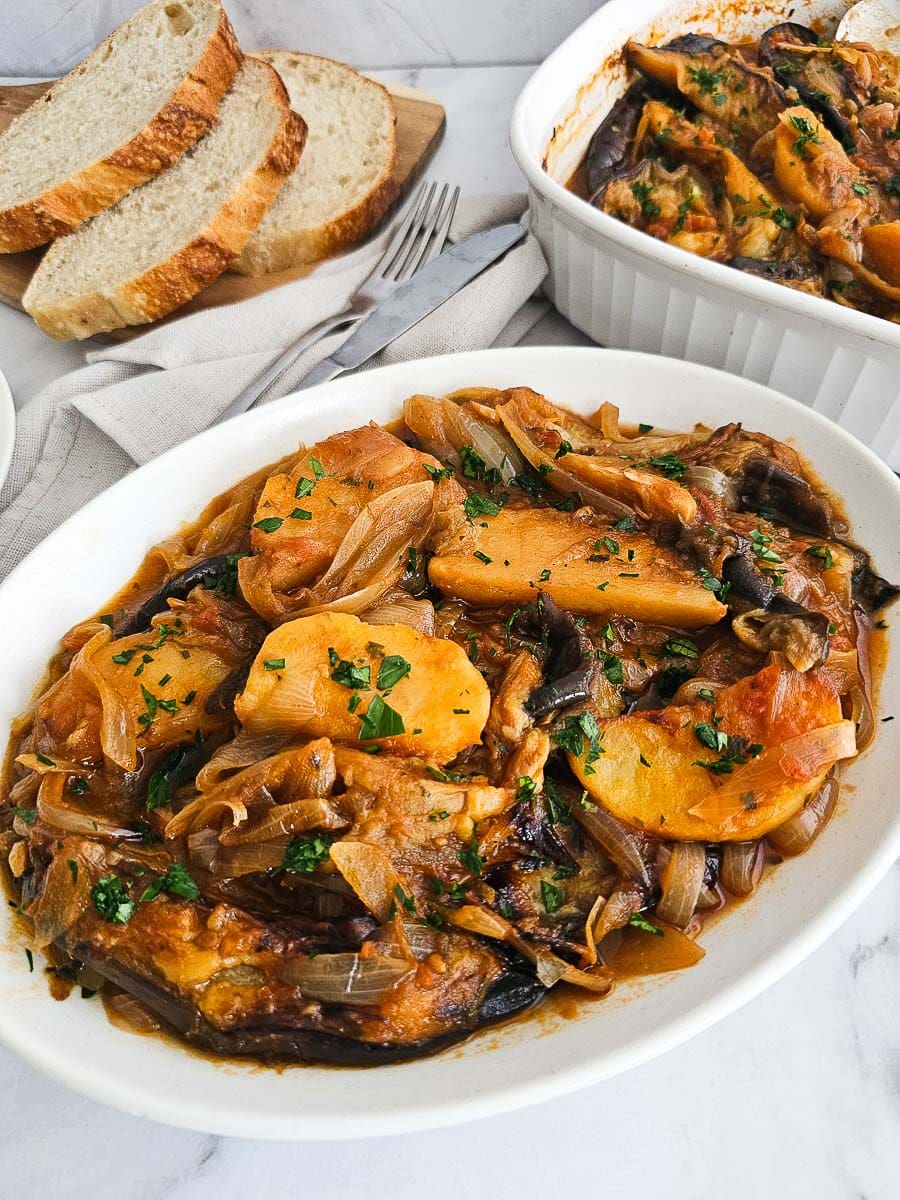
The term “lathera” originates from the Greek word “lathi,” meaning oil. These dishes are an integral part of the Mediterranean diet and are known for their generous use of olive oil and feature a variety of seasonal vegetables as the main ingredients. These dishes are a healthy and flavourful way to incorporate more vegetables into your diet. Many lathera dishes naturally cater to dairy-free, gluten-free, and vegan diets, making them a versatile choice across various eating lifestyles and a staple in Greek vegetarian cuisine.
To make this Eggplant, Potato and Tomato Casserole, the eggplants, potatoes and onions are first sautéed separately until lightly browned. They are then combined in a large baking dish, topped with a tomato sauce, and baked in the oven until the vegetables are tender and the sauce has thickened slightly. Alternatively, you can place all your ingredients in a large pot and simmer over the stove top instead baking in the oven.
Similar to my mum’s Greek Butter Beans Casserole (Gigantes Plaki) recipe, this lathera dish incorporates a generous amount of onions. We add them to so many dishes without thinking twice. They add a nice caramelised sweet flavour to the dish, along with numerous health benefits.
What to serve with this dish
Lathera dishes are often enjoyed as the main meal rather than as a side dish. Just like all lathera dishes, you must serve this dish with your favourite crusty sourdough bread to soak up all the tomato juices on your plate. I personally enjoy it as is, but you can crumble some feta cheese over the top before serving. You could even accompany this meal with some Greek Meatballs and Taramosalata.
Other examples of lathera dishes include:
- Gigantes Plaki: Greek Butter Beans Casserole. Giant white beans baked in a rich tomato sauce with onions, garlic and olive oil.
- Fasolakia: Greek Green Beans with Potatoes, stewed together in a savoury tomato base.
- Yemista: Greek Stuffed Tomatoes with Rice, filled with a flavourful mixture of rice, herbs, and sometimes ground meat.
- Spanakorizo: Spinach and rice cooked with onions, dill, lemon and olive oil.
- Arakas Latheros: Greek Peas in Tomato Sauce (Arakas Latheros) cooked in olive oil with dill and onion.
- Prasorizo: Leeks cooked with rice.
- Briam: A baked vegetable medley often including potatoes, zucchini, eggplant, tomatoes and onions, all cooked with olive oil.
Ingredients for Eggplant, Potato and Tomato Casserole
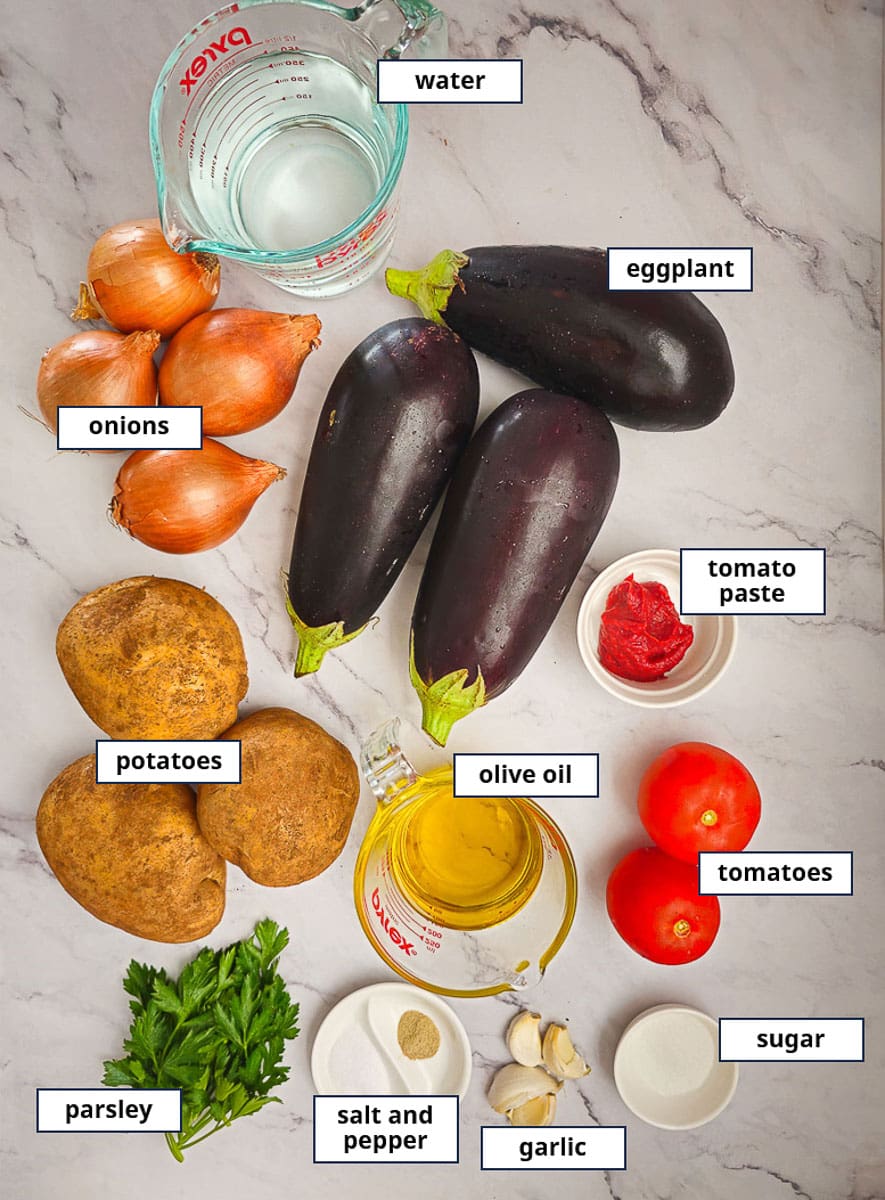
- Eggplant: Choose small to medium eggplants, rather than the extra-large ones, as larger eggplants tend to have more seeds. Look for shiny, smooth eggplants with a green stem, as well as firm, heavy eggplants, as this indicates freshness and they are less likely to have seeds. The seeds in the eggplant are what causes them to have a bitter taste. I always salt my eggplant before cooking just to be on the safe side.
- Potatoes: Choose all-purpose potatoes, such as Brushed, Yukon Gold or Russet potatoes, which hold their shape well when cooked in a stew or sauce.
- Onions: White onions work best for this dish, offering a mild yet slightly sweet flavour that complements the other ingredients in the tomato sauce.
- Tomatoes: I usually only add tomato paste to this casserole, but you can add a couple of fresh tomatoes if you wish.
- Olive oil: A key ingredient in this casserole. Use extra-virgin olive oil for its high levels of monounsaturated fats and antioxidants.
How to make Eggplant, Potato and Tomato Casserole
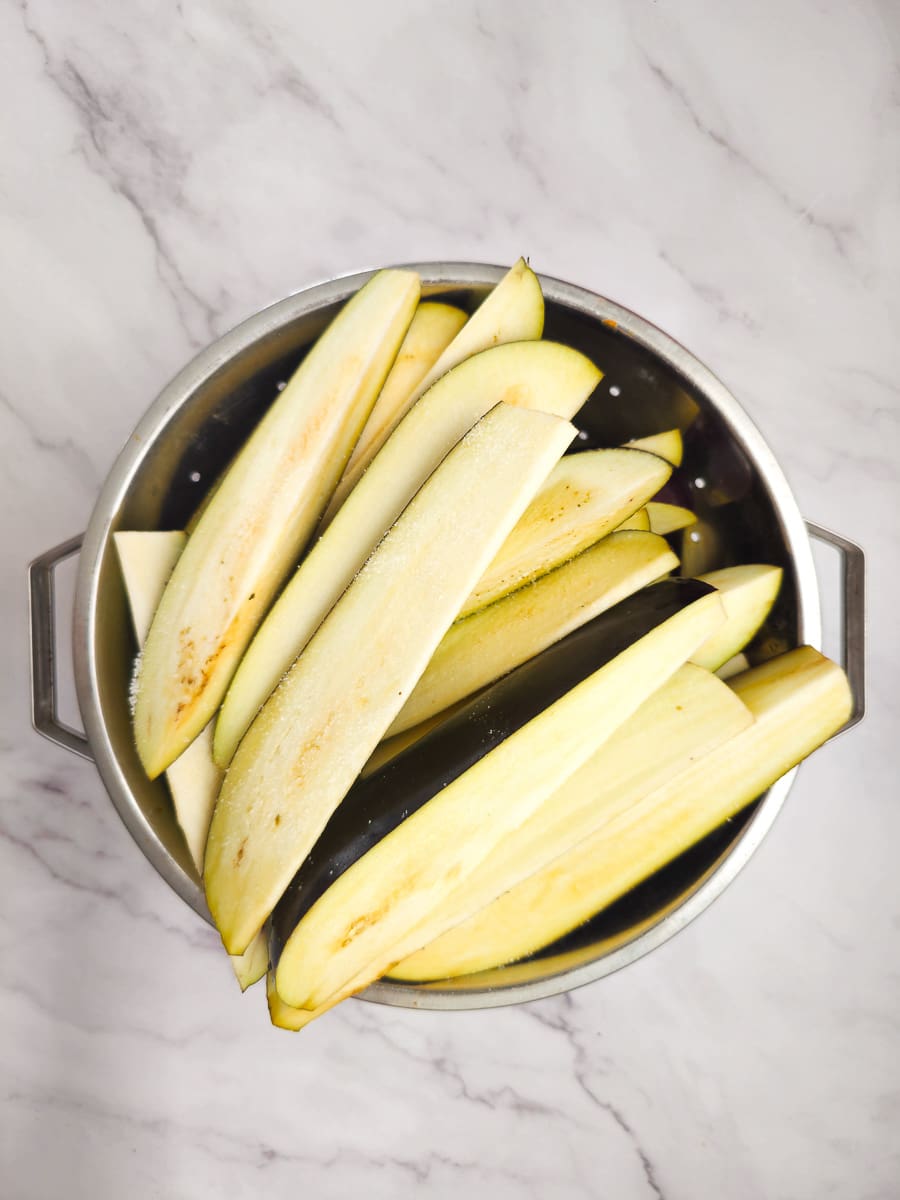
1. Cut eggplant into wedges. Generously salt and let stand in a colander for 20-30 minutes. Rinse and pat dry with a paper towel or clean tea-towel.
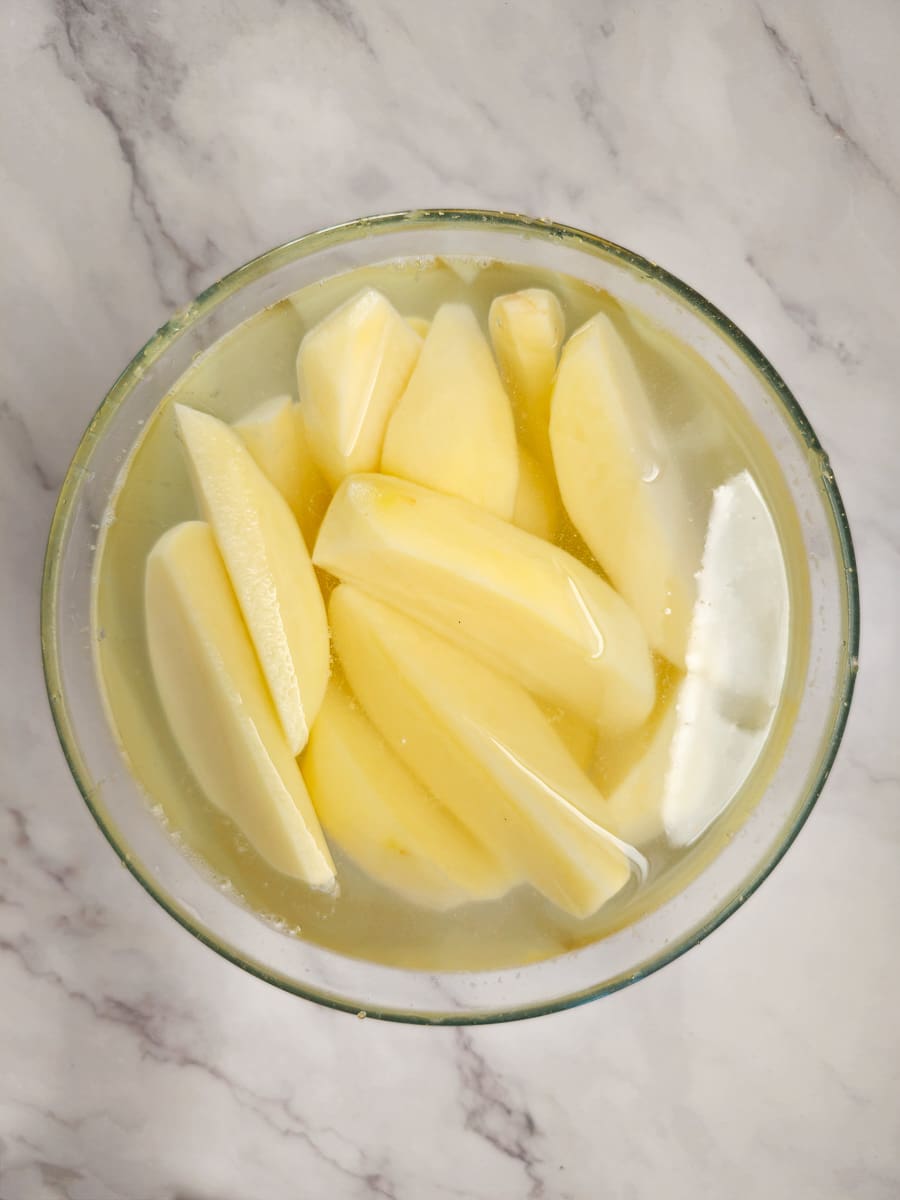
2. Peel and cut potatoes into wedges and place in a bowl of water for 10 minutes. Strain and pat dry with a paper towel.
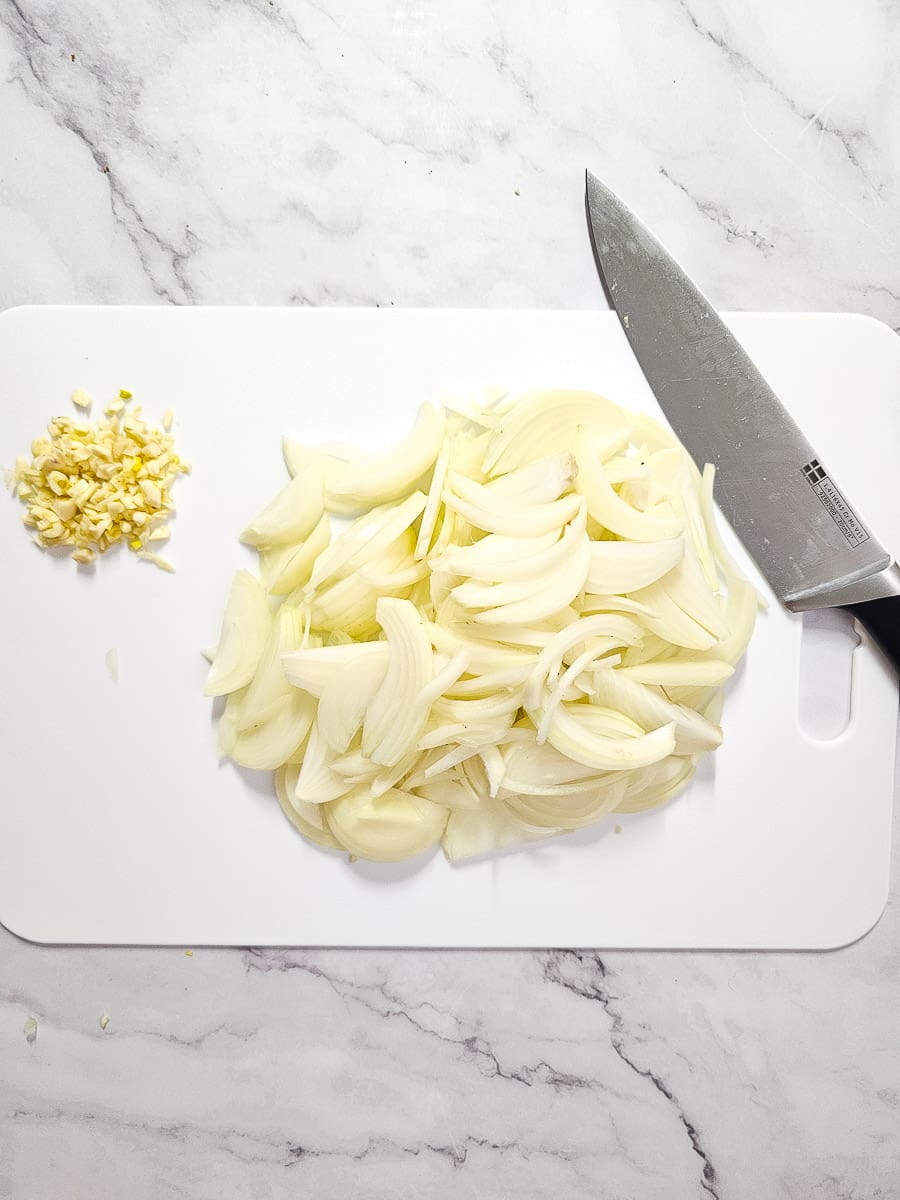
3. Peel and slice onions. Peel and crush garlic.

4. Place chopped tomatoes in a food processor and blend until smooth.
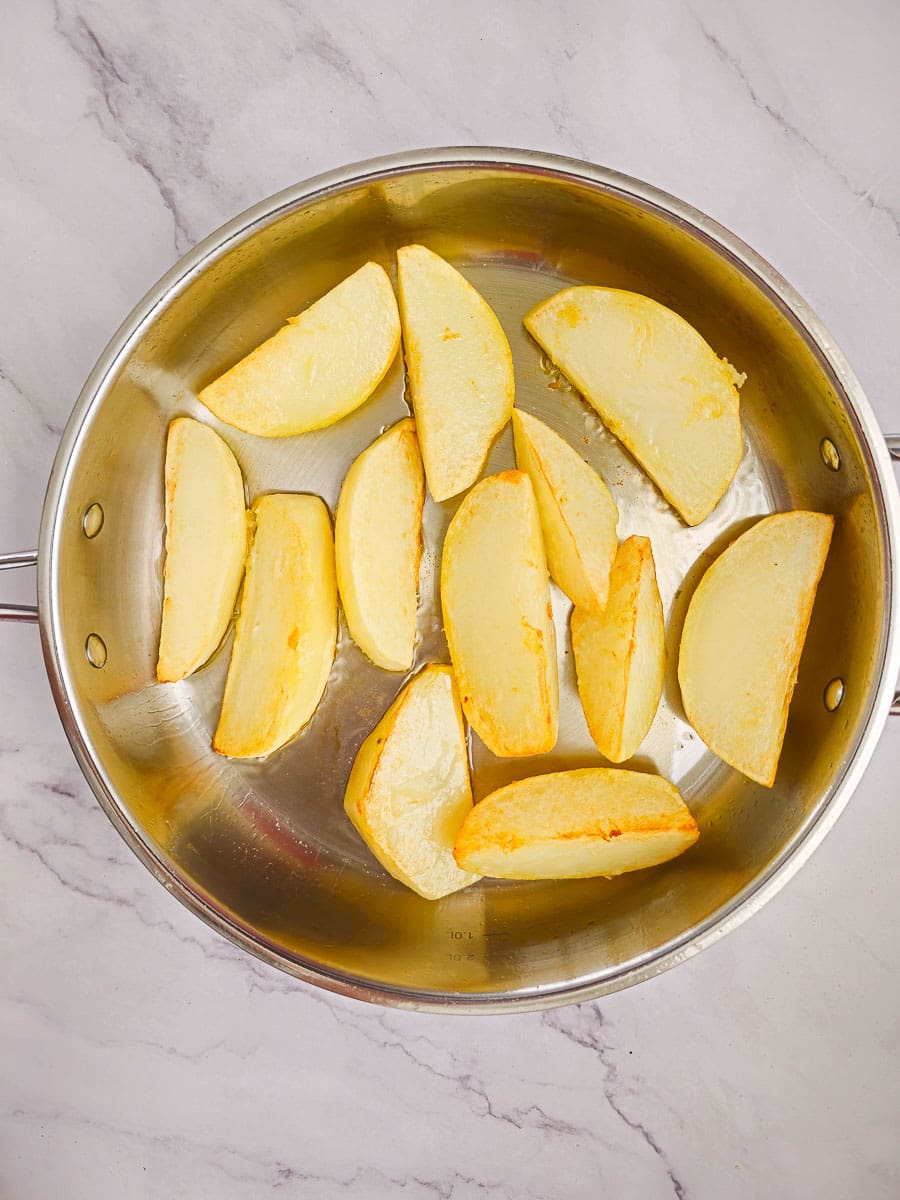
5. Sauté potatoes for 4-5 minutes or until lightly golden on each side.
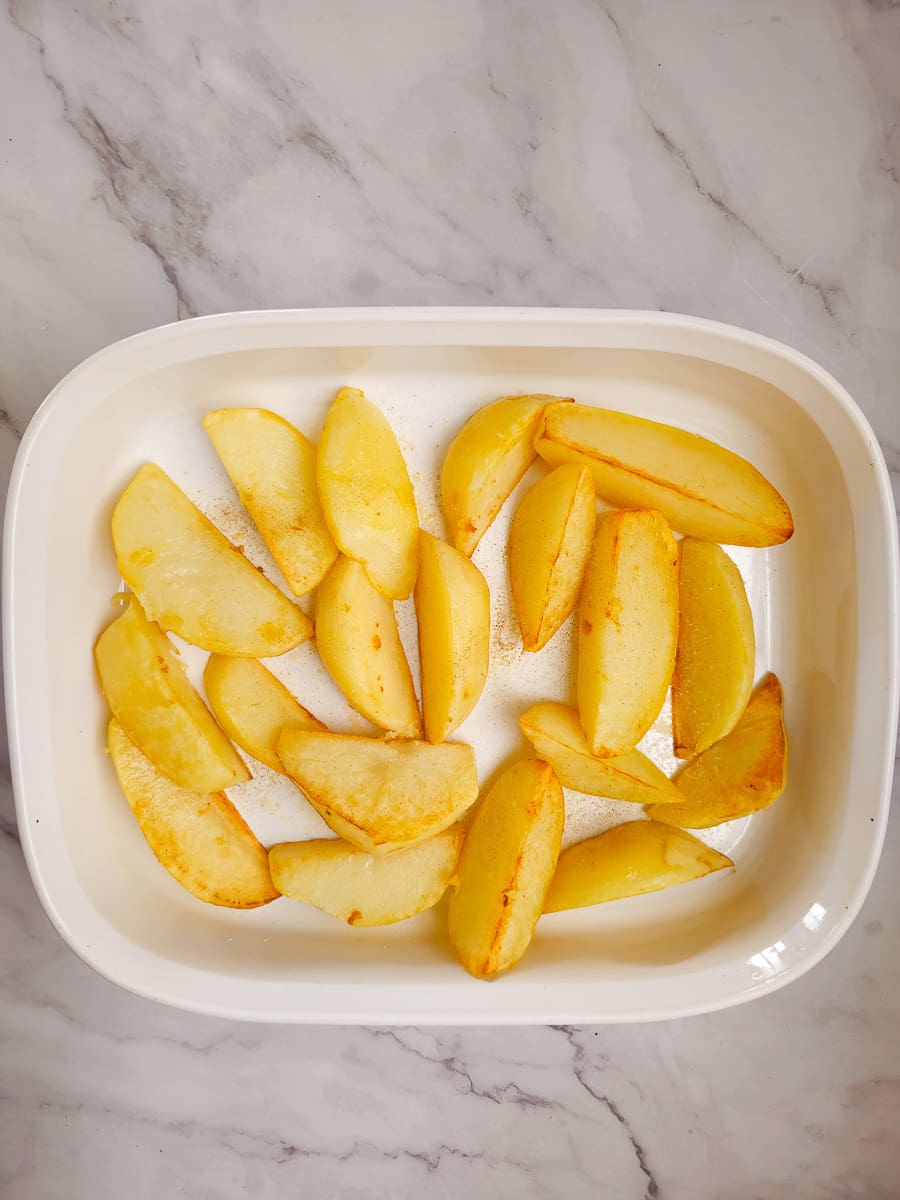
6. Place potatoes in baking tray.
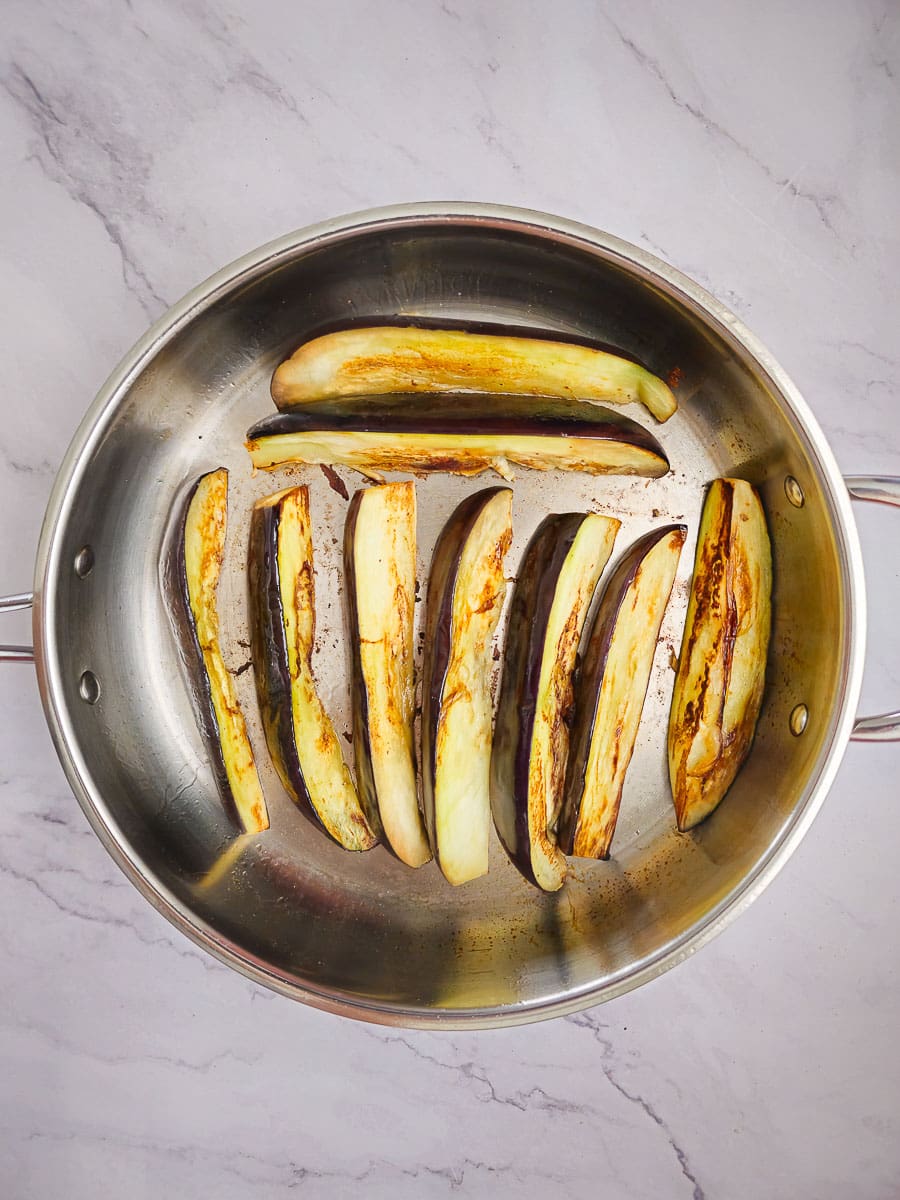
7. Sauté eggplant in batches until lightly golden.
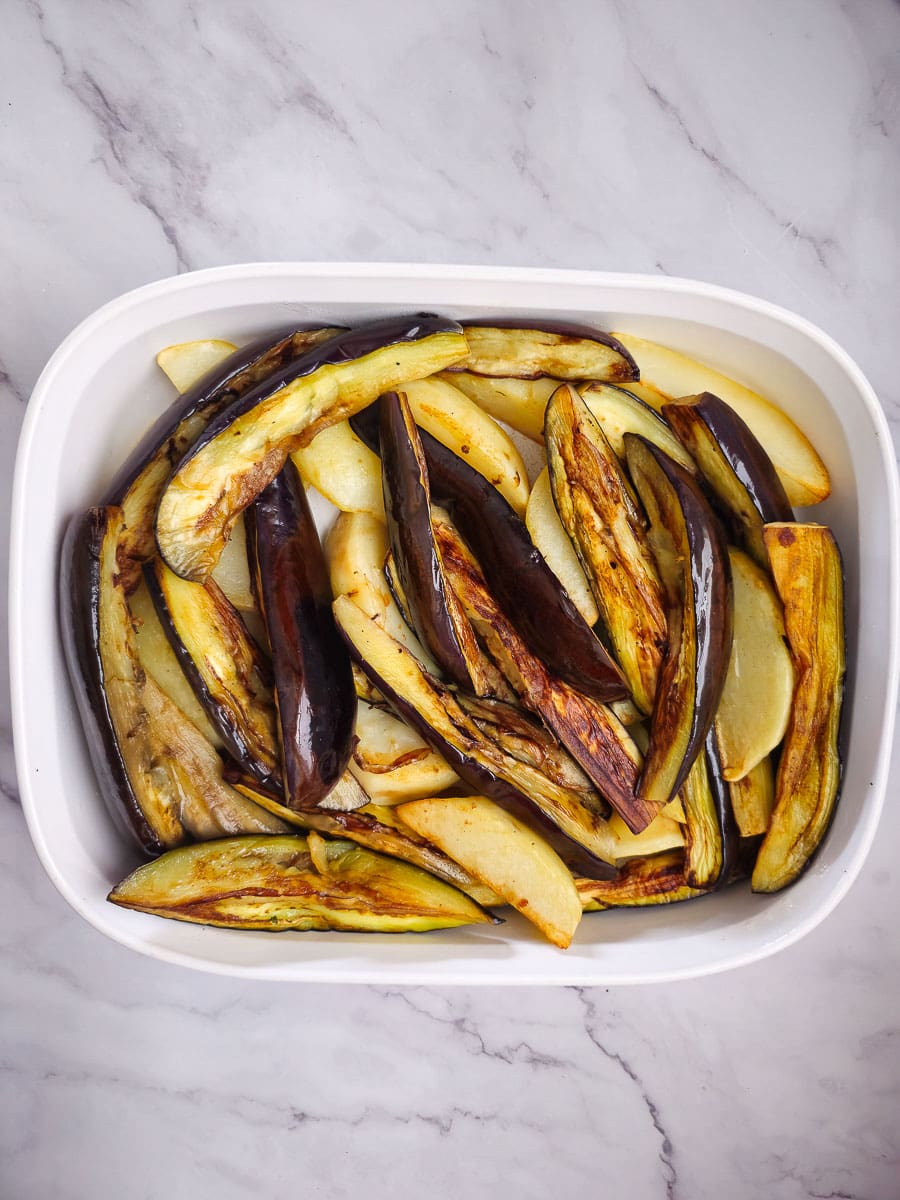
8. Place eggplant in baking tray with the potatoes.
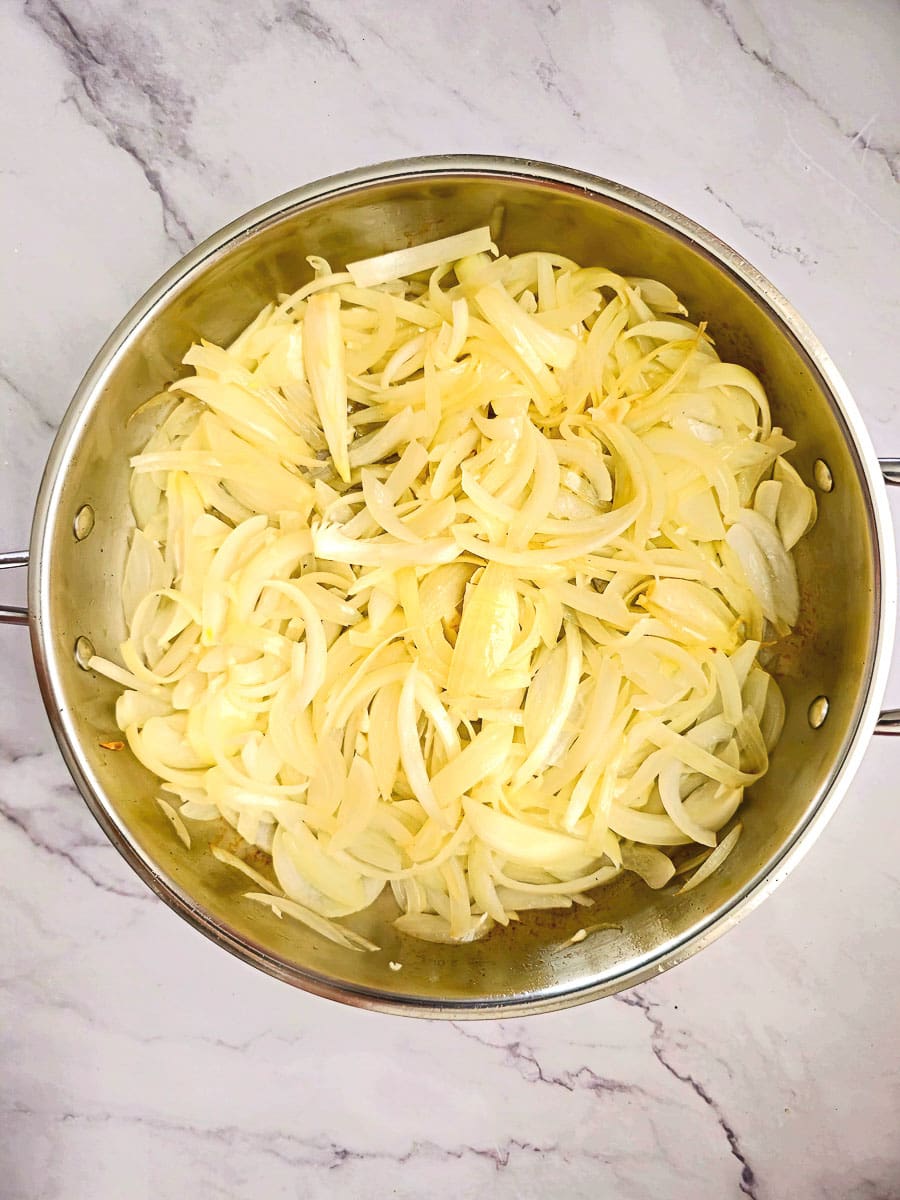
9. Sauté onions for 5-7 minutes or until onions are soft and translucent. Add garlic and sauté for a further 2-3 minutes.
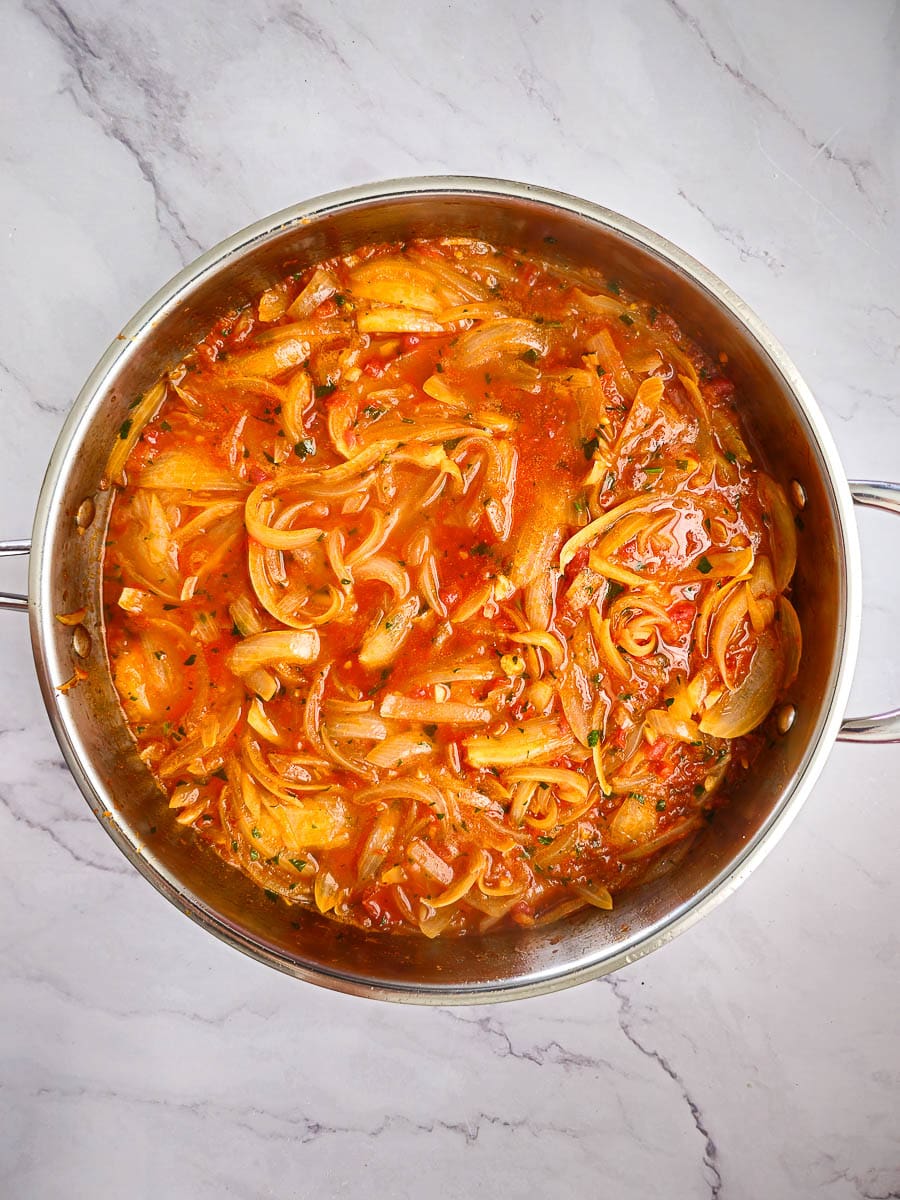
10. Add tomato paste, followed by pureed tomatoes, sugar, salt, pepper, parsley and water. Bring to the boil and simmer for 1-2 minutes.
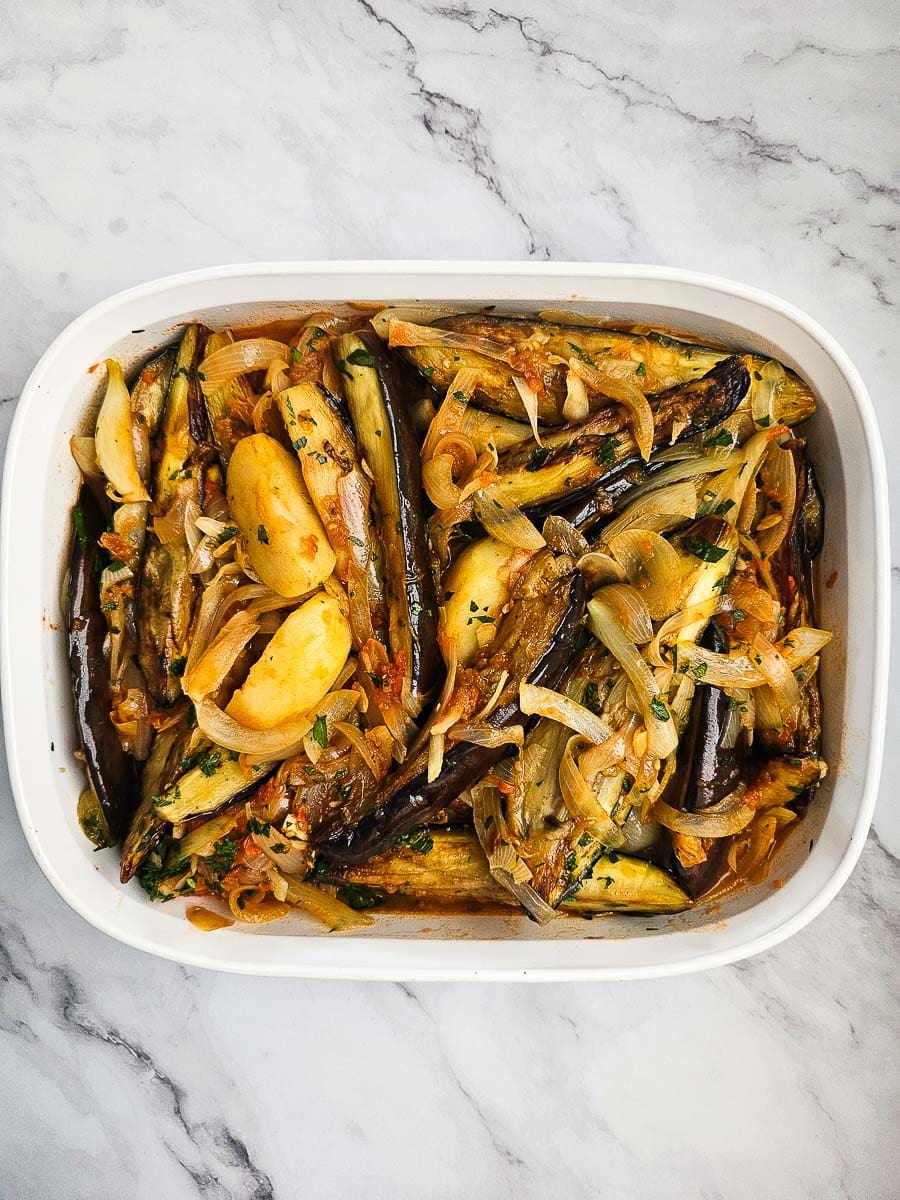
11. Pour tomato and onion mixture over the eggplants and potatoes.

12. Bake in oven, covered, for 40 minutes. Remove foil and continue to bake for a further 15-20 minutes, or until the potatoes are cooked.
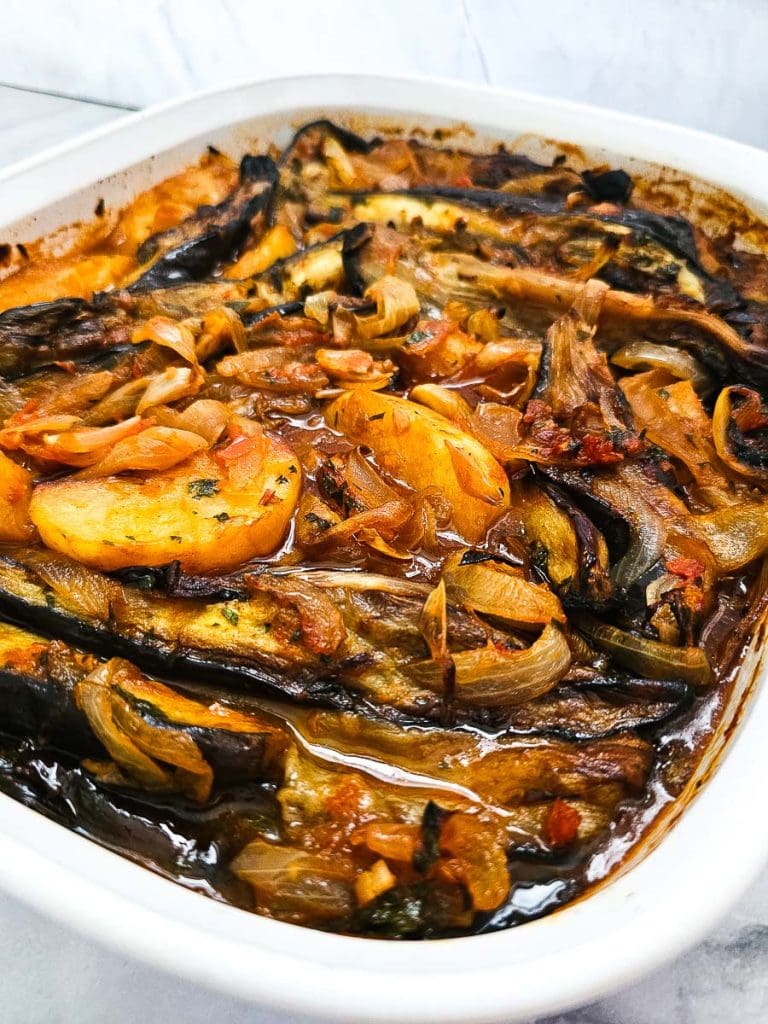
13. Remove from oven and let sit for 10 minutes. The sauce thickens when cooled slightly.
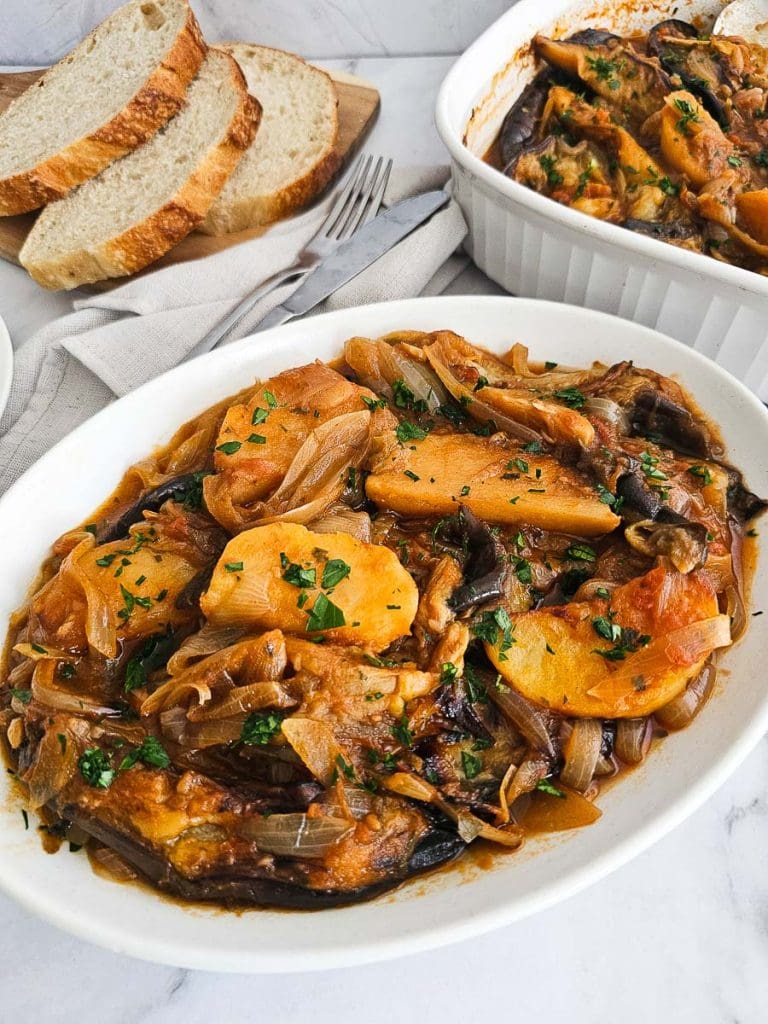
14. Garnish with additional fresh parsley and serve with feta cheese and sourdough bread if desired.
Health benefits of Eggplant, Potato and Tomato Casserole
This Eggplant, Potato and Tomato Casserole is packed with nutritional benefits. Eggplants are rich in antioxidants, promote heart health, reduce cancer risk, and enhance cognitive function, while their high fibre content helps lower blood sugar levels. Potatoes, essential to the Mediterranean diet, offer vitamins, potassium, and antioxidants that help prevent chronic diseases. Onions and garlic, often overlooked, fortify the immune system, fight inflammation and improve heart health. Even tomato paste, often underestimated in terms of nutritional benefits, is highly concentrated with nutrients, including antioxidants like lycopene, which are beneficial for heart health and reducing inflammation. For more information on the health benefits of eggplant, take a look at this article on Medical News Today: Health Benefits of Eggplant.
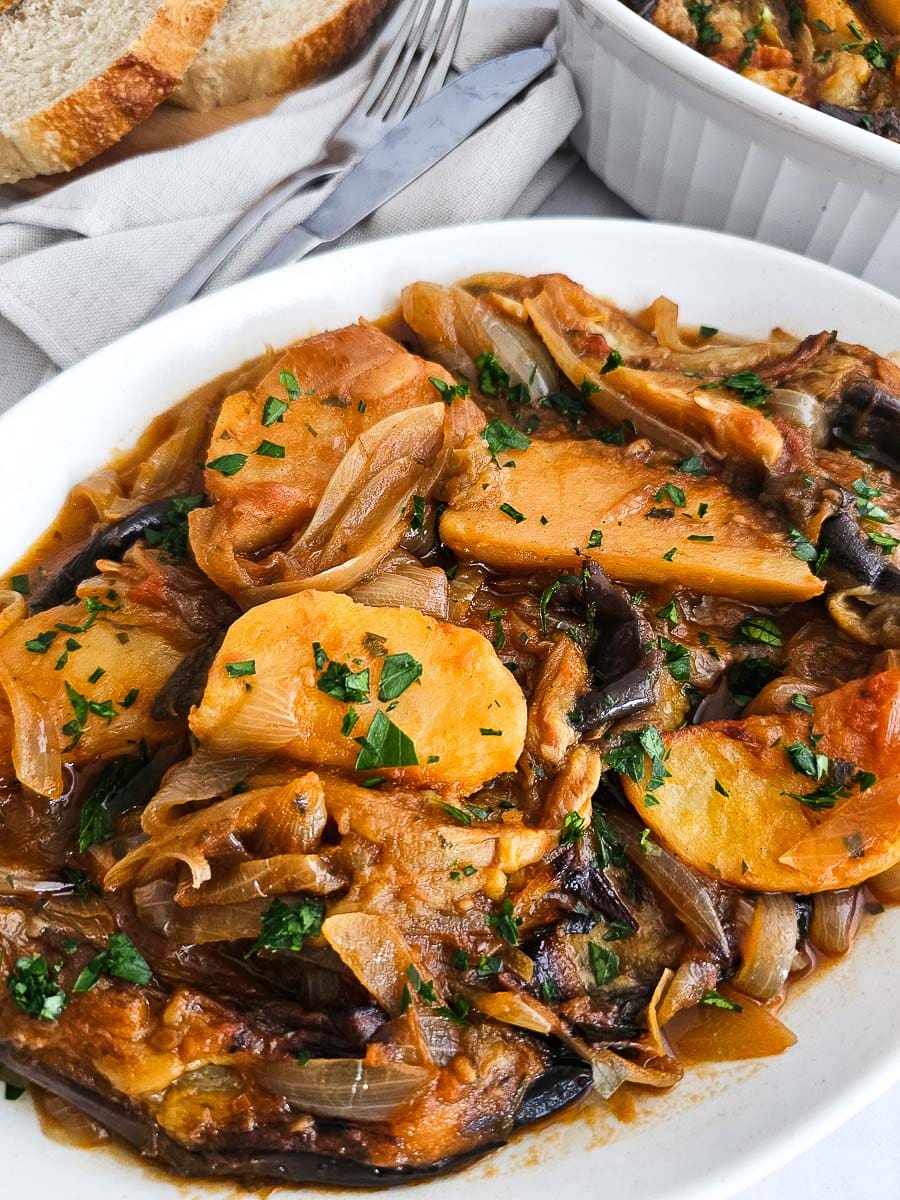
Tips for making Eggplant, Potato and Tomato Casserole
Do you need to salt your eggplant?
I always salt my eggplant regardless of how fresh or how many seeds they have. While eggplants are bred to be less bitter these days, bitterness can still occur now and again. Salting eggplants can help to remove any potential bitterness in the eggplant. It also helps to draw out any excess moisture from the eggplant, which can prevent it from becoming soggy when grilled or fried.
To salt eggplant, place your eggplant in colander and sprinkle generously with salt. Let them sweat for about 30 minutes. Rinse and pat dry with a clean tea-towel.
Prepare ahead
You can prepare this dish the day before by preparing and frying your eggplant, potatoes and onions and then placing them in a baking dish and storing in the fridge. On the day of serving, prepare the tomato sauce, pour it over the vegetables, and bake in the oven. Just make sure you don’t prepare the dish in a ceramic baking dish, as when the baking dish is cold, it could crack when you place it in a hot oven, (I learned that the hard way!), so use an aluminium or stainless-steel baking dish instead.
Storage
To store, allow the casserole to cool slightly before transferring it to an airtight container. It will keep in the fridge for 3-4 days or can be frozen for up to 3 months.
To reheat, thaw in the refrigerator overnight. Then, warm it in the microwave. Alternatively, place the casserole in an oven-proof dish and cover with foil. If you find that the casserole has soaked up all the sauce during storage, you can add a small amount of water to the dish before covering it. Place in preheated oven for 15-20 minutes, or until warmed through.

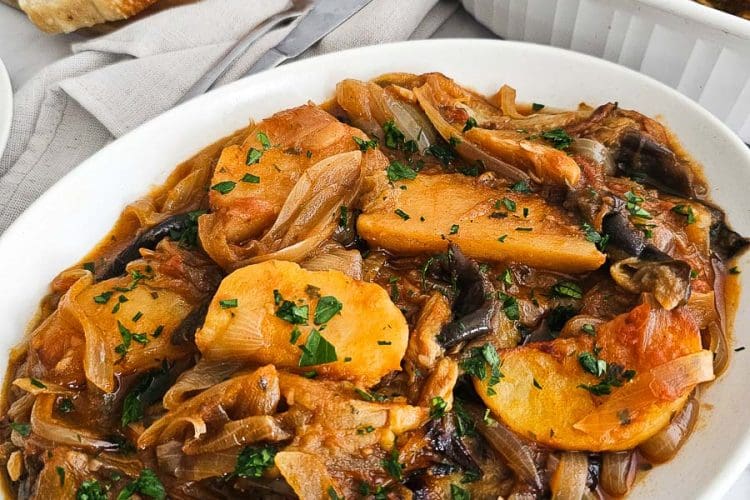

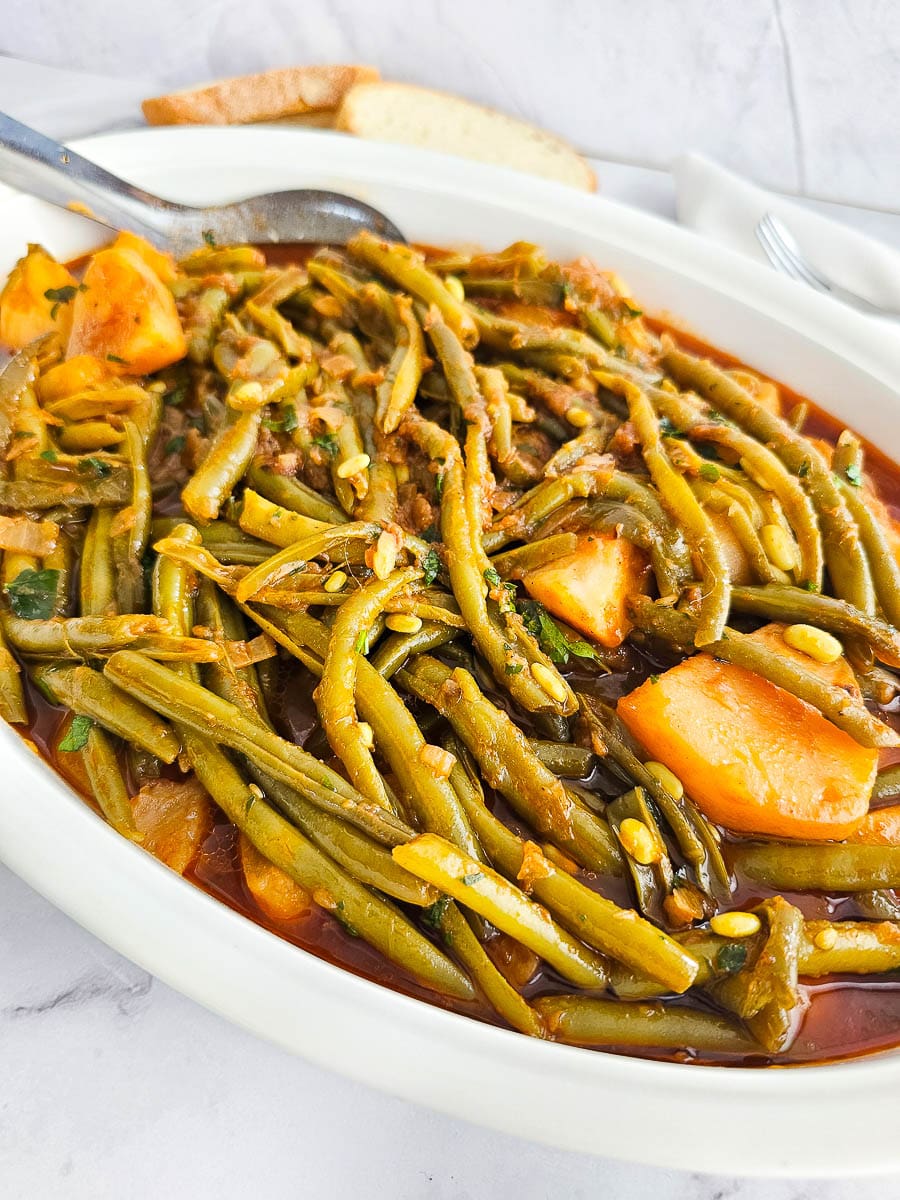
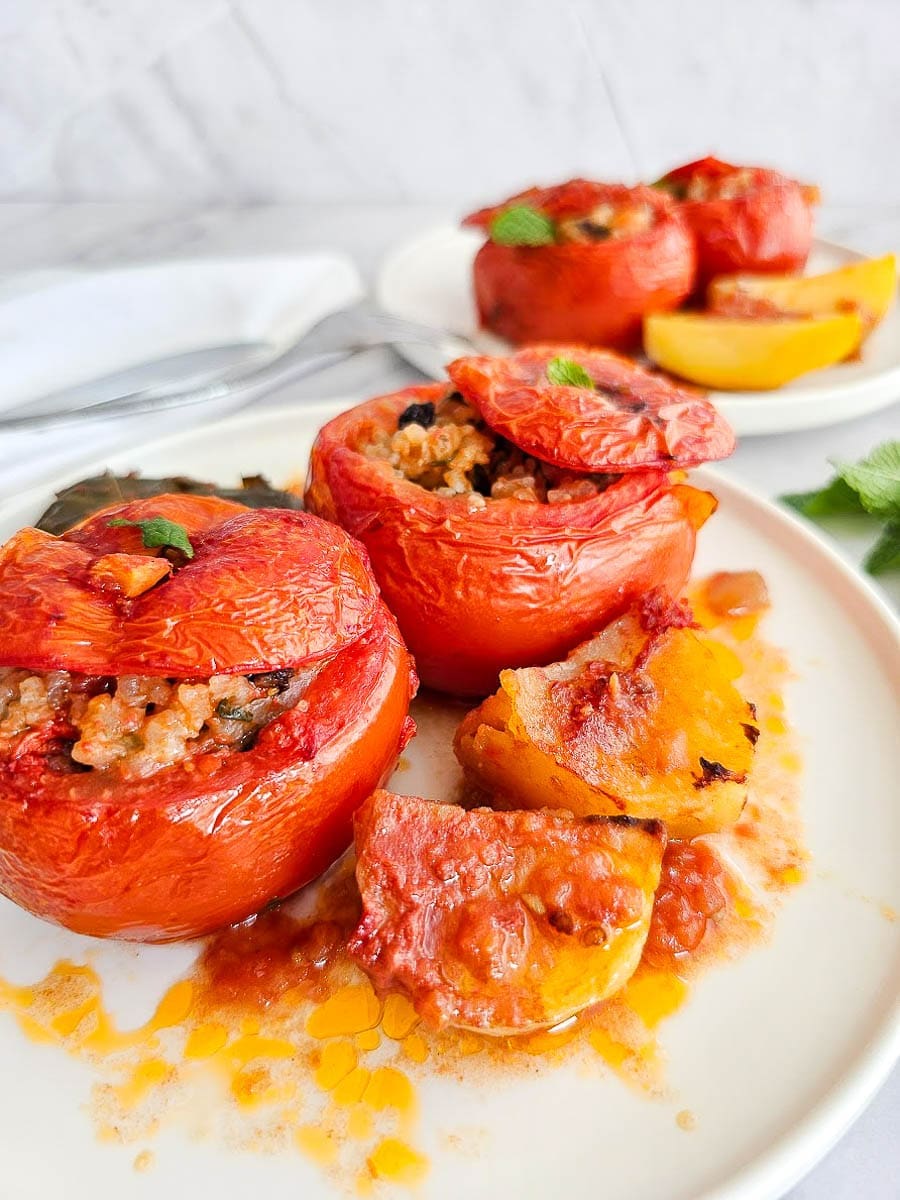
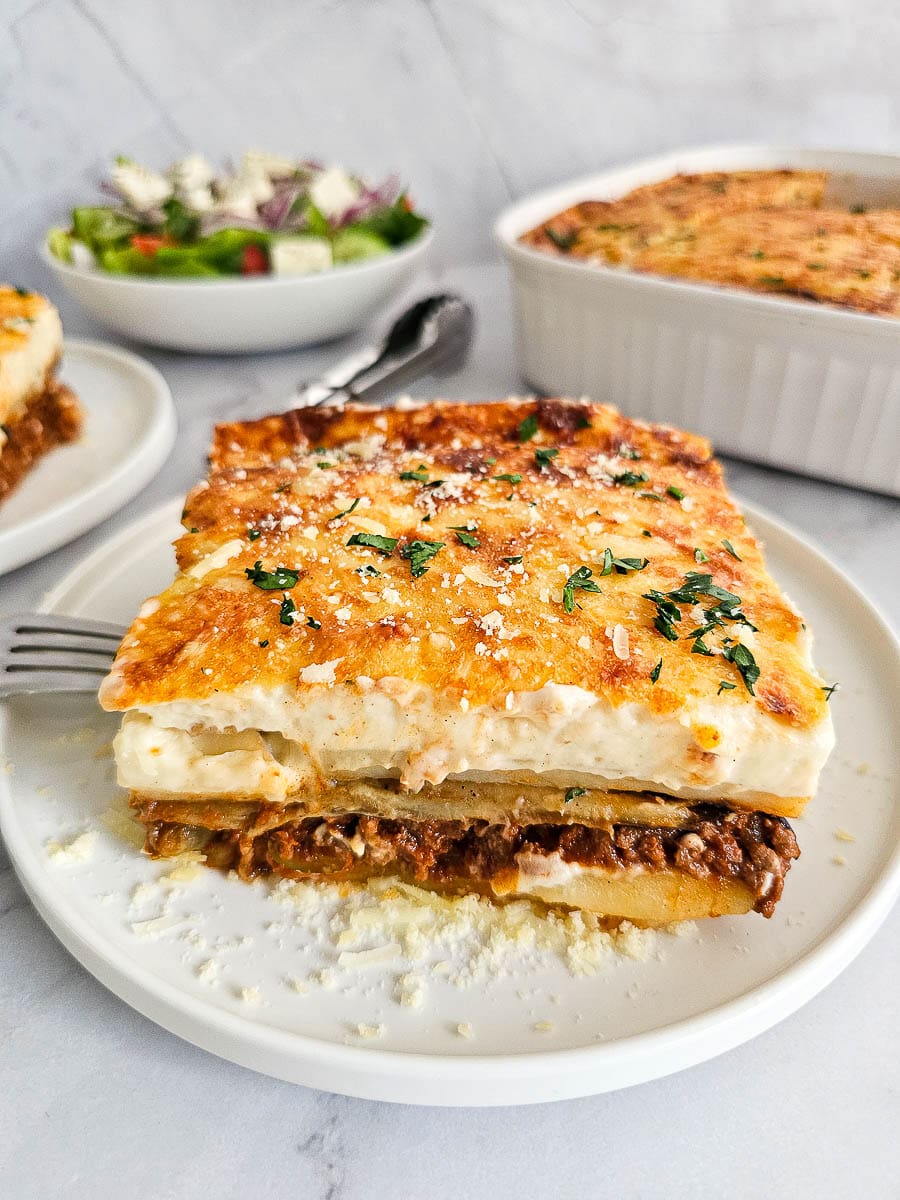
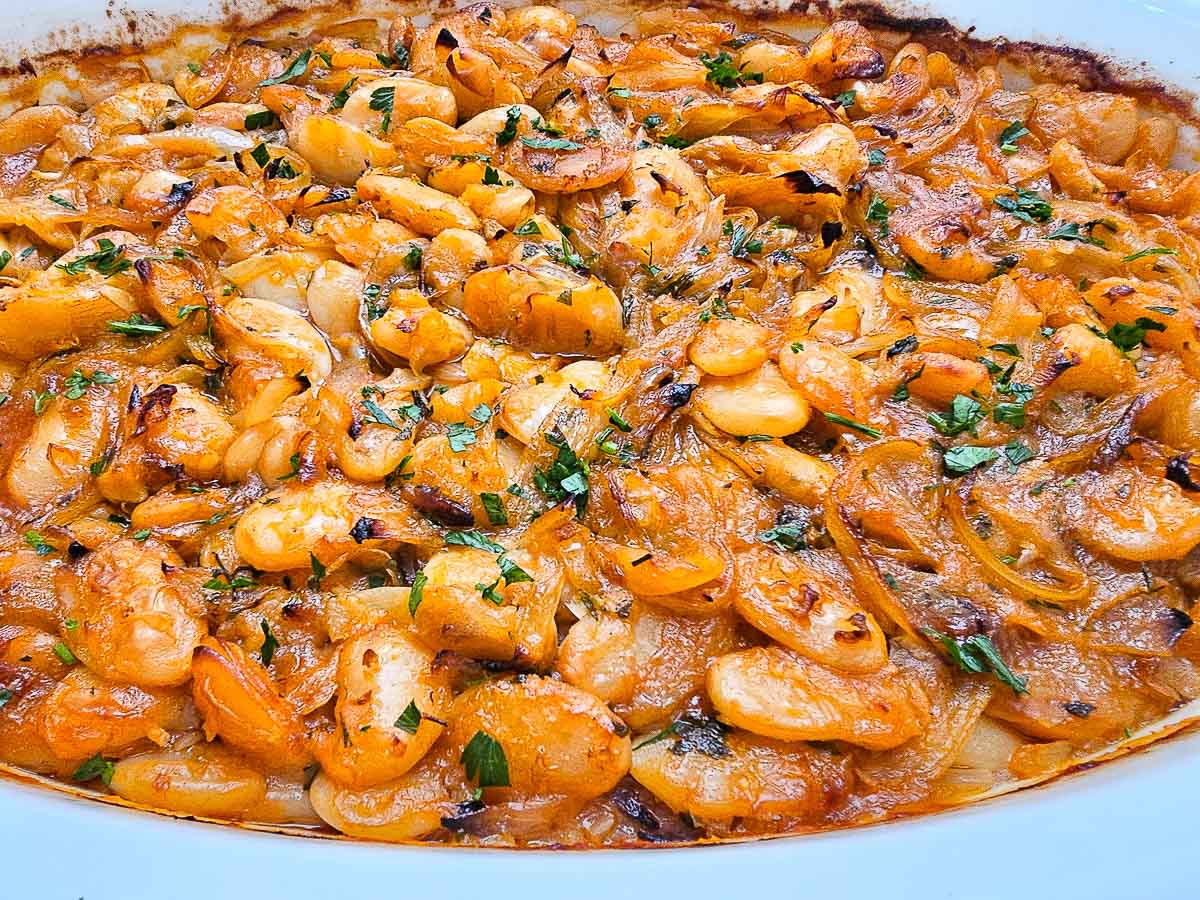

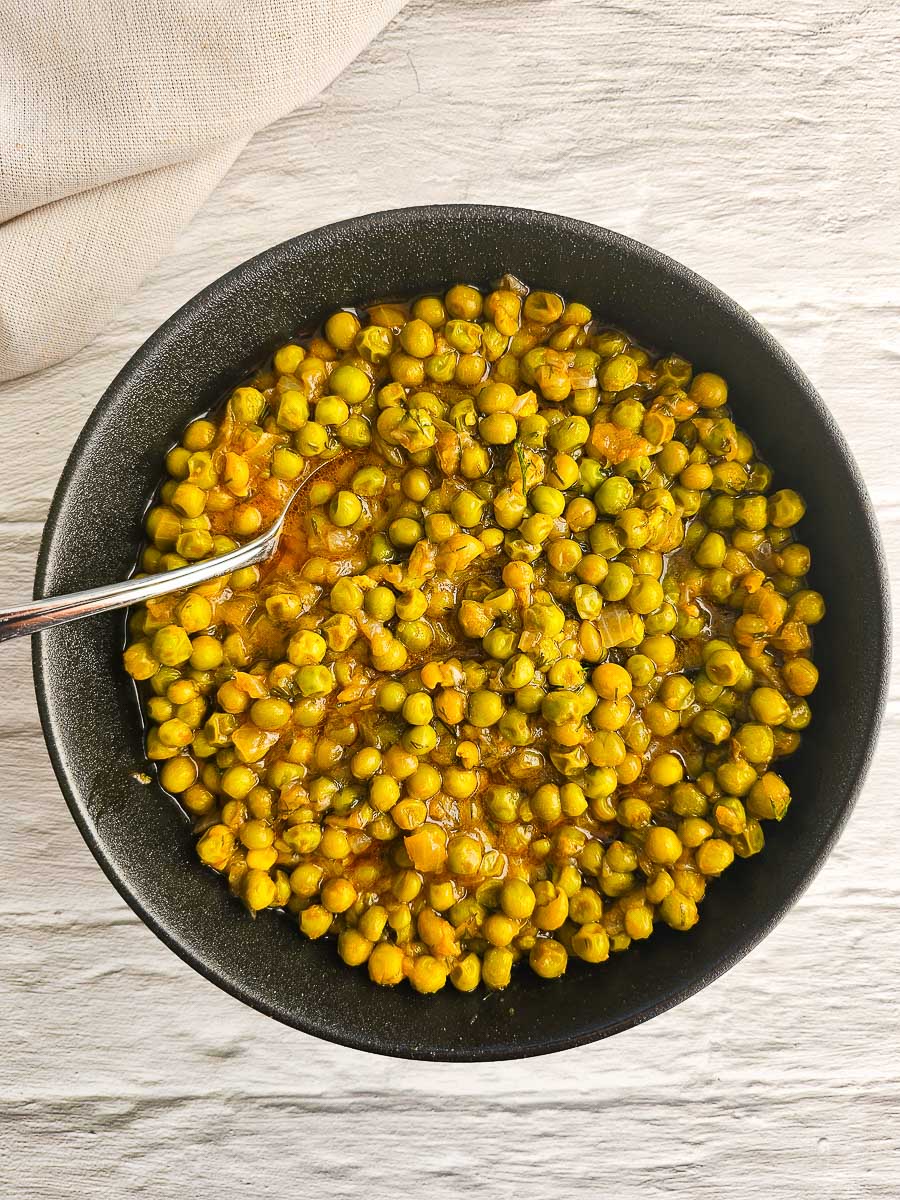
What temperature do you bake this dish on? I cannot find it anywhere. Thank you!
Hi Brenda,
Bake in a preheated oven at 180°C / 350°F. Sorry for missing that in the instructions—thanks for pointing it out! I’ve added it now. Hope you enjoy the recipe!